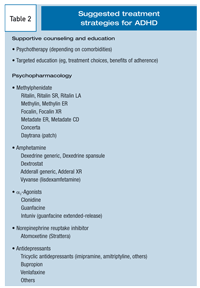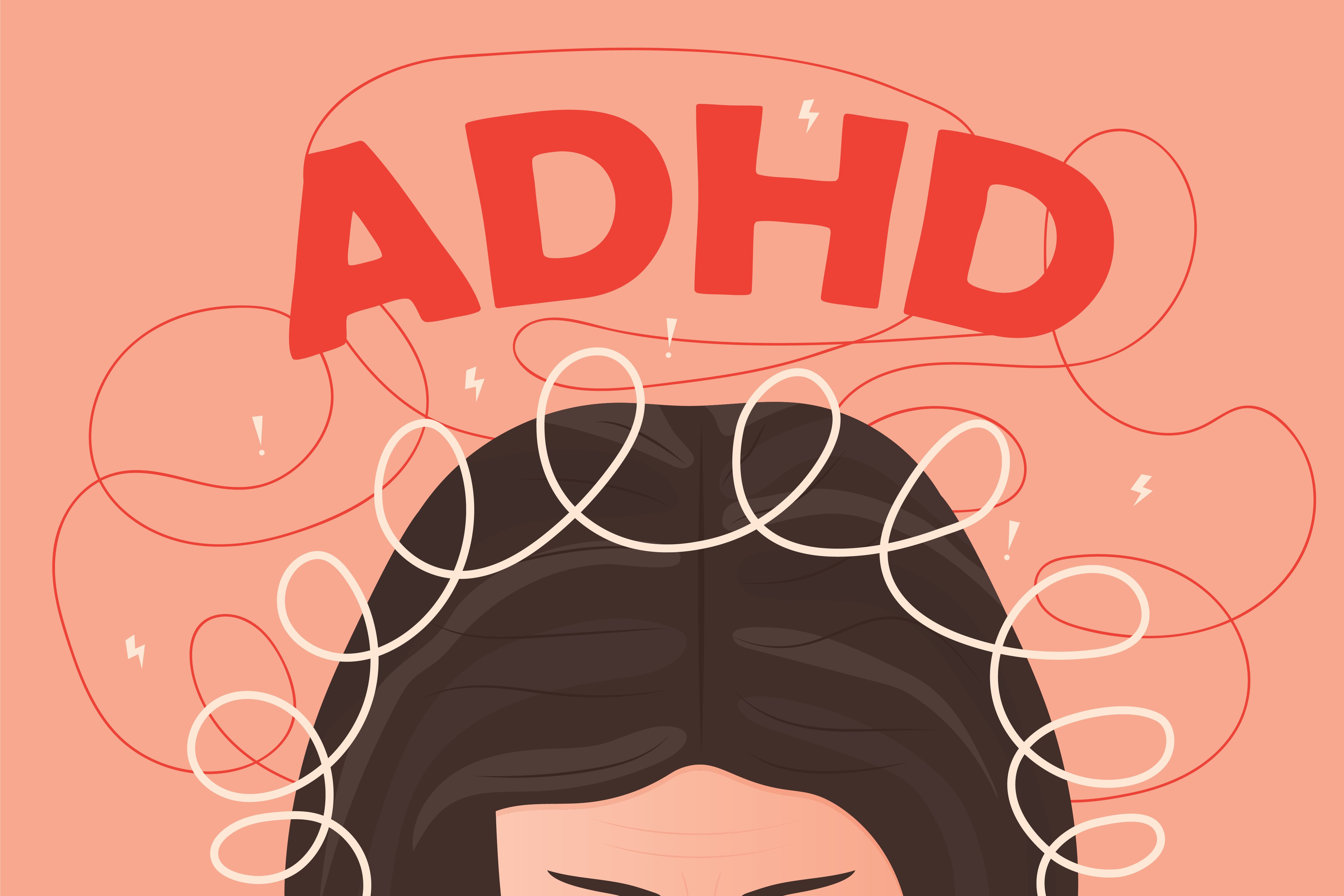Publication
Article
Psychiatric Times
Strategies to Improve Medication Adherence in Youths
Author(s):
This discussion focuses on approaches to improve medication adherence, particularly in reference to helping adolescents remain on recommended psychopharmacological regimens when transitioning from acute to long-term maintenance.

Psychopharmacology has become a cardinal feature of psychiatric treatment for adolescents in the 21st century.1,2 Successful transition of youth with psychiatric disorders from the initial treatment to long-term management is fraught with pitfalls that can sabotage success. A major conundrum is lack of adherence to recommended psychopharmacological regimens. Limited adherence (nonadherence, nonconcordance) can be a major sticking point in the management of chronic illnesses-both psychiatric and medical.3As noted inTable 1, there are many determinants for this.
Time is the wisest counselor of all. -Pericles (495 bc to 429 bc)
This discussion focuses on approaches to improve medication adherence, particularly in reference to helping adolescents remain on recommended psychopharmacological regimens when transitioning from acute to long-term maintenance.
Improving adherence
For physicians, improving patient adherence to medication recommendations has proved to be a complex task. Even patients who have been court-ordered to treatment show limited follow-through.4 There is no established evidence-based strategy that improves medication adherence in all cases.5 Poor treatment response is a warning sign of nonadherence. When clinical progress is not seen, counseling an adolescent patient about the need for the medication, getting the patient to “buy-in” to the recommended medication(s), and working on the therapeutic alliance will usually result in better adherence than simply switching to another medication, increasing the dosage, or adding another medication.

While the adult literature on nonadherence is considerable, there is a dearth of publications regarding this dilemma in children and adolescents. Two recent articles have proposed theoretical models to help us understand the origins of nonadherence in this population, with suggestions on strategies to improve it.6,7 Most authors propose similar strategies to improve medication adherence, which generally include discussing with patients the importance of medication, setting up rewards, providing handouts, increasing education of both patient and parents/caregivers, sending reminders about appointments, and using supplementary health care workers in the education process (eg, nurses, social workers, primary care clinicians).8 In addition to specific techniques, the regular day-to-day clinical encounters psychiatrists and patients have can do much to augment adherence.
Building patient rapport
Limited communication may contribute to nonadherence; therefore, efforts to build a mutually beneficial rapport should begin during the initial evaluation. Allow enough time to establish an effective communication pattern with the patient. Minimal time spent may lead to the patient’s lack of respect for the clinician and to problems with treatment recommendations. If the initial clinician is not overseeing the long-term maintenance management, the new clinician who becomes involved will need to start building rapport from the beginning.
What is already known about transitioning psychopharmacology in children and adolescents?
? Psychopharmacology is important for adolescents with psychiatric disorders, but many youths become treatment-nonadherent. Getting them to take their medications regularly is very challenging, and research in this area of child and adolescent psychiatry is limited.
What new information does this article provide?
? Try a variety of techniques to improve compliance based on knowledge of the specific patient as well as the patient’s disorder. Good rapport with the patient is crucial. You and the office staff must be accepting of the often difficult adolescent patient. The patient’s consent on treatment choice is vital to improve compliance with medications. Personalize strategies to ensure treatment adherence (eg, texting reminders regarding medication, using e-mail for any questions that arise outside of office visits).
What are the implications for psychiatric practice?
? Adjust the schedule so more time can be spent developing a healthy and mutually beneficial therapeutic alliance. Keep good notes that provide information about what makes this patient “tick.” Do not rely on the patient’s diagnosis alone; treat comorbidities as well. Avoid coercion-you cannot “force” the patient to take medications. If you do not get the adolescent’s “buy-in,” expect limited compli-ance. You will be working with this patient over a long period, and you have time on your side.
Therapeutic approaches
Successful treatment requires engaging the young patient in the health care process according to his or her cognitive level and psychiatric diagnosis. The 6 A’s of basic outpatient care are availability, accessibility, approachability, acceptability, appropriateness, and affordability.9 Competent caring for an adolescent with a chronic condition will not occur if the clinician is not readily accessible. Evening hours often work well for saturnine youths who may not be appreciative of an early morning visit, when circadian rhythms are not well aligned. If the clinician is not-or does not appear to be-approachable, he or she will not be successful in dealing with a youth’s intimate and complicated mental health issues over the long term. It is difficult to establish a beneficial alliance if the youth finds it difficult to see the clinician or is forced to see one that he does not trust.
The patient should feel that he is liked. Adolescents need a warm and accepting milieu. Malignant attitude problems may come from the young patient or his parents, but they should never arise from the office personnel. Because cost is an increasingly common barrier, the care should be affordable to the patient and family.
Trust of the clinician and the profession in general is a major component for acceptance (and adherence) of psychotropics by children and adolescents.10 The patient’s parents may also resist use of psychotropics for their child.11 As trust builds, the clinician can more clearly and succinctly explain the need for medications and can overcome the family’s intrinsic distrust of them.10,11 Failing to engage patients in treatment decisions will often result in treatment nonadherence and, thus, negative outcomes. A power struggle might ensue and result in patients who sabotage treatment efforts.10,12
As with adult patients, shared decision making is an important component in effectively managing symptoms in young patients.13,14 Although this may be more complex in psychiatry than in general medicine, shared decision making is necessary for optimal results.15 More research is clearly needed to understand an adolescent’s experience with and perceptions of recommended psychotropic medications.16
Western medicine comes out of the Hippocratic tradition, which granted rights to the treating physician on the basis of the long-held belief that the physician would unselfishly and professionally act in the best interests of the patient.17-20 Twentieth century medicine, based on earlier historical developments in the United States, emphasized the rights of patients. This concept was strongly stimulated by the Nuremberg trials in 1946. The term “informed consent” was first used in a medical malpractice trial in 1957.17 Even if minors cannot legally provide consent to solidify trust and openness, clinicians should make sure that their patient understands the treatment options and agrees to the choices.18
It is vital that the patient consents to the treatment or he may sabotage the treatment, refuse to take the recommended medication(s), and weaken the critical therapeutic alliance. Principles of confidentiality must be clearly established and continuously followed for the benefit of all involved-the pediatric patient, his parents/caregivers, and the psychiatrist.19,20 HIPAA (Health Insurance Portability and Accountability Act) rules must be followed21; however, confidentiality is not absolute, and the clinician’s judgment is important.
Adherence-enhancing techniques
Intermittent evaluation of the clinician-patient conversation (ie, the nature of the conversation versus specific therapy) is important and will improve adherence.22 Antagonistic actions, such as coercion and compulsion, can have long-lasting, disastrous results on the therapeutic alliance.23 Understanding the patient and his motivations for using or not using a medication is important in devising strategies to ameliorate fragile medication adherence.24 Patient education is a key factor in motivating depressed adults to feel better about themselves; the same strat-egy can be used for adolescents.25
New technology (eg, answering questions via e-mail), embraced by most youths, is a powerful communication tool.26 Young patients are often forgetful; thus, strategies such as texting reminders can improve medication adherence.27

The presence of comorbid conditions such as ADHD (Table 2presents suggestions for management of ADHD), severe family dysfunction, and chronic medical problems complicate medication adherence.28 Comorbidities need to be addressed simultaneously with the presenting disorder.
Inevitably, conflicts arise between the adolescent and the treating clinician-conflicts between adolescents and society have been noted for thousands of years and are not necessarily pathological.29 Plato (427 bc to 347 bc), the great classical philosopher and mathematician, said, “The son feels equal to his father, he has no respect for his parents anymore . . . all he wants to be is free . . . students insult their teachers . . . and on top of this situation, in the name of liberty and equality, sex is everywhere!”30 This master philosopher was simply articulating a classic, yet dour, description of normal, yet inevitable, aspects of adolescence.
CASE VIGNETTES
John, an 11-year-old with ADHD, is readmitted to the psychiatric inpatient unit because of impulsive behaviors that “do not respond to treatment.” His family reports that medications work well in the beginning but soon after they “lose power,” which leads to relapse. On the unit, John is uncooperative, angry, and agitated; does not follow directions; and gets into fights with other patients. He is given a stimulant he had not tried before, and he shows a spectacular improvement. He becomes helpful to staff and his fellow patients to the point that he gets the title of “honorary mental health worker.” Discharge plans involve returning home in 48 hours. On the day before discharge, John begins to exhibit the same type of behaviors that brought him to the unit. These behaviors are initially interpreted as decreased medication effectiveness, and the dose is increased. On the day of discharge, the behaviors become so impulsive that John needs quiet time.
How could it be that such initially spectacular improvement faded away so quickly?
***
Angela, a 12-year-old with ADHD, is on a regimen of a long-acting stimulant in the morning and a short-acting stimulant in the afternoon to help her complete her homework. This regimen has worked well for many months. The child of divorced parents, Angela spends part of the week with her father and part with her mother. She feels very good about taking her medication. However, for the past several weeks, Angela’s performance at school has declined because she has not handed in some of her homework. This has led to an increase in the dose of the short-acting stimulant in the afternoon, which consequently has caused insomnia. Psychotherapeutic work was started to help Angela overcome some oppositional behavior toward certain teachers.
What made a long-stable situation suddenly worsen?
Treatment failures in both cases are related to nonadherence. In John’s case, even when confined to the psychiatric unit, he still managed to avoid taking medication. He had become close to his “fellow” mental health workers, so when they confronted him with the possibility that he may not have been taking his medication, he opened up and shared that he felt “stupid and ashamed” to have to take medicine. This was supportively addressed in the inpatient setting for 2 days and followed up by the outpatient psychiatrist, with good results and improved outcome.
Angela, as it turns out, was cared for by a maternal grandmother on certain days who “did not believe” in medication and would not administer the short-acting stimulant on days that coincided with math and history homework-the two subjects Angela was failing. Once the grandmother was involved in the treatment effort and offered education as well as support, she resolved her opposition to medications and Angela returned to her usual good level of functioning.
References:
References
1.
Greydanus DE, Patel DR, Feucht C.
Pediatric Psychopharmacology in the 21st Century.
New York: Saunders; 2011.
2.
Greydanus DE, Calles JL Jr, Patel DR, et al, eds.
Clinical Aspects of Psychopharmacology in Childhood and Adolescence.
New York: Nova Science Publishers Inc; 2011.
3.
World Health Organization. Adherence to long-term therapies: evidence for action; 2003.
http://www.who.int/hiv/pub/prev_care/lttherapies/en
. Accessed February 22, 2012.
4.
Kaplan G, Pannullo D, Brodzinsky D, Hitt JC. Noncompliance with family court mandated evaluations in a juvenile justice clinic.
Bull Am Acad Psychiatry Law
. 1994;22:31-38.
5.
Haynes RB, Yao X, Degani A, et al. Interventions to enhance medication adherence.
Cochrane Database Syst Rev
. 2005;(4):CD000011.
6.
Gearing RE, Mian IA. An approach to maximizing treatment adherence of children and adolescents with psychotic disorders and major mood disorders.
Can Child Adolesc Psychiatr Rev
. 2005;14:106-113.
7.
Charach A, Volpe T, Boydell KM, Gearing RE. A theoretical approach to medication adherence for children and youth with psychiatric disorders.
Harv Rev Psychiatry
. 2008;16:126-135.
8.
Eisenmann CM. Revising a medication education program on an inpatient child and adolescent psychiatric unit.
J Psychosoc Nurs Ment Health Serv
. 2012;50:42-47.
9.
Hofmann AD. Providing care to adolescents. In: Hofmann AD, Greydanus DE, eds.
Adolescent Medicine
. 3rd ed. Stamford, CT: Appleton & Lange; 1997:39.
10.
McLeod JD, Pescosolido BA, Takeuchi DT, White TF. Public attitudes toward the use of psychiatric medications for children.
J Health Soc Behav
. 2004;45:53-67.
11.
Croghan TW, Tomlin M, Pescosolido BA, et al. American attitudes toward and willingness to use psychiatric medications.
J Nerv Ment Disord
. 2003;191:166-174.
12.
Kamboj MK, Greydanus DE, Bricker LA, Patel DR. Transition of pediatric endocrine patients to adult care.
Int J Disability Hum Devel
. 2010;9:22-30.
13.
Perestelo-Perez L, Gonzalez-Lorenzo M, Perez-Ramos J, et al. Patient involvement and shared decision-making in mental health care.
Curr Clin Pharmacol
. 2011;6:83-90.
14.
Légaré F, Ratté S, Stacey D, et al. Interventions for improving the adoption of shared decision making by healthcare professionals.
Cochrane Database Syst Rev
. 2010;(5):CD006732.
15.
Unguru Y. Making sense of adolescent decision-making: challenge and reality.
Adolesc Med State Art Rev
. 2011;22:195-206, vii-viii.
16.
Floersch J, Townsend L, Longhofer J, et al. Adolescent experience of psychotropic treatment.
Transcult Psychiatry
. 2009;46:157-179.
17.
Mallardi V. The origin of informed consent [in Italian].
Acta Otorhinolaryngol Ital
. 2005;25:312-327.
18.
Campbell AT, English A. Law, ethics, and clinical discretion: recurring and emerging issues in adolescent health care.
Adolesc Med State Art Rev
. 2011;22:321-334, xi.
19.
Lyren A, Silber TJ. Consent, confidentiality, and other related issues in the care of adolescents. In: Greydanus DE, Patel DR, Pratt HD, eds.
Essentials of Adolescent Medicine
. New York: McGraw-Hill Medical Publishers; 2006:29-42.
20.
McDonnell WM. Adolescent health care. In: Donn SM, McAbee GN, eds.
Medicolegal Issues in Pediatrics
. Elk Grove Village, IL: American Academy of Pediatrics; 2012:131-139.
21.
English A, Ford CA. The HIPAA privacy rule and adolescents: legal questions and clinical challenges.
Perspect Sex Reprod Health
. 2004;36:80-86.
22.
Linden M, Westram A. What do psychiatrists talk about with their depressed patients parallel to prescribing an antidepressant?
Int J Psychiatry Clin Pract
. 2011;15:35-41.
23.
Molodynski A, Rugkåsa J, Burns T. Coercion and compulsion in community mental health care.
Br Med Bull
. 2010;95:105-119.
24.
Baumann M, Trincard M. Autonomy attitudes in the treatment compliance of a cohort of subjects with continuous psychotropic drug administration [in French].
Encephale
. 2002;28(5, pt 1):389-396.
25.
Hansson M, Chotai J, Bodlund O. What made me feel better? Patients’ own explanations for the improvement of their depression.
Nord J Psychiatry
. 2012 Jan 3; [Epub ahead of print].
26.
Menachemi N, Prickett CT, Brooks RG. The use of physician-patient email: a follow-up examination of adoption and best-practice adherence 2005-2008.
J Med Internet Res
. 2011;13:e23.
27.
Krolop L, Jaehde U. Compliance enhancement in drug therapy: opportunities and limitations [in German].
Internist (Berl)
. 2012;53:99-107.
28.
Kaplan G, Newcorn JH, Ivanov IS. Attention deficit hyperactivity disorder: pharmacologic management in children and adolescents. In: Greydanus DE, Calles JL Jr, Patel DR, et al, eds.
Clinical Aspects of Psychopharmacology in Childhood and Adolescence
. New York: Nova Science Publishers; 2011:3-29.
29.
Greydanus DE, Strasburger VC. Preface: adolescent medicine.
Adolesc Med Prim Care Clin Office Pract
. 2006;33:xiii-xviii.
30.
Plato.
The Republic
. http://classics.mit.edu/Plato/republic.html. Accessed February 22, 2012.
31.
Shakespeare W.
Henry V
. Act 1, Scene 1:45-47.
http://shakespeare.mit.edu/henryv/full.html
. Accessed February 22, 2012.






